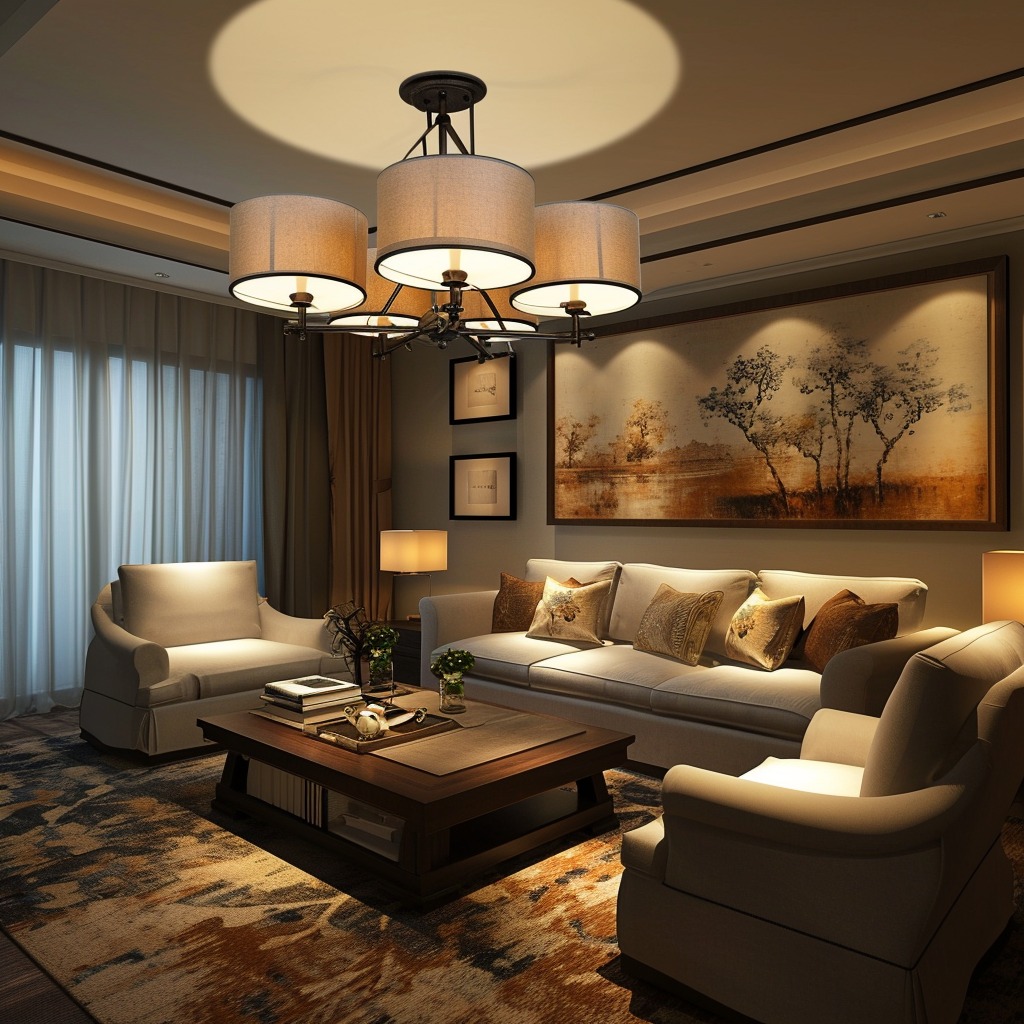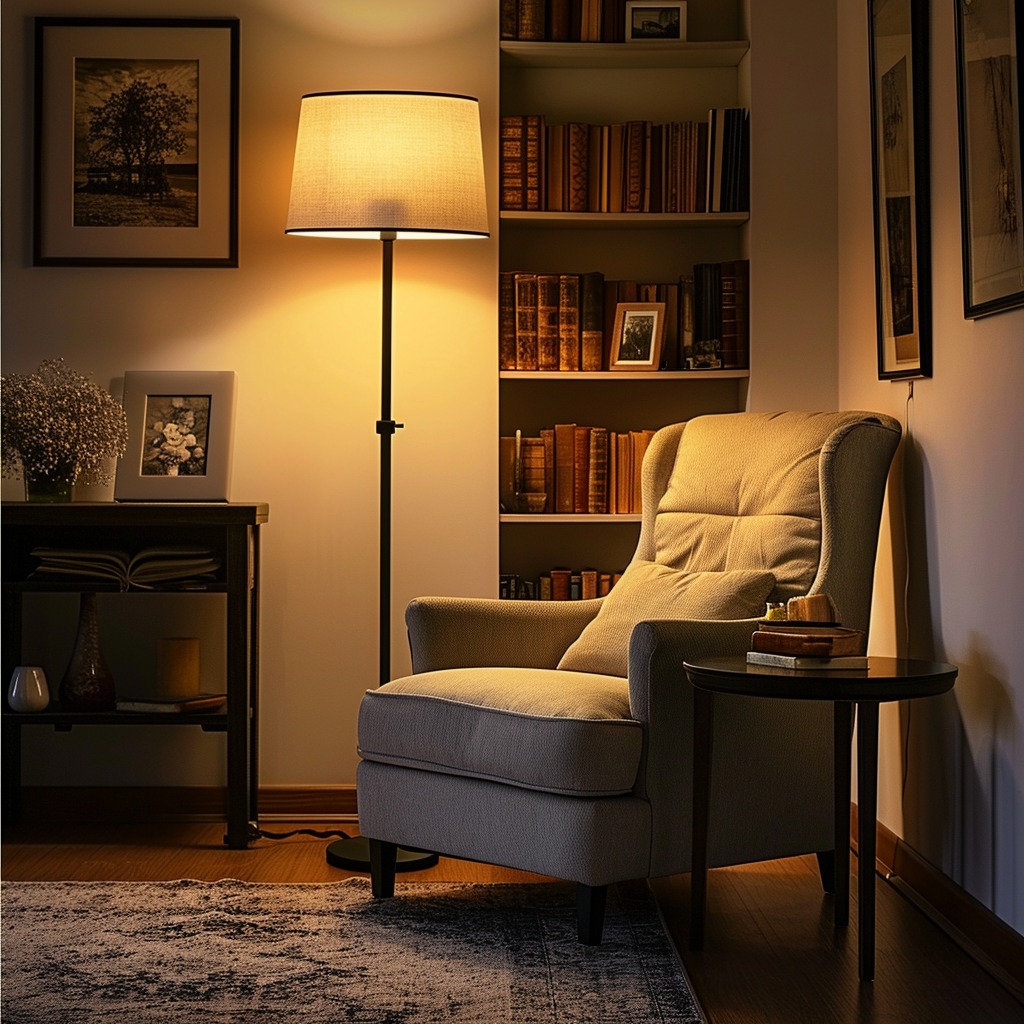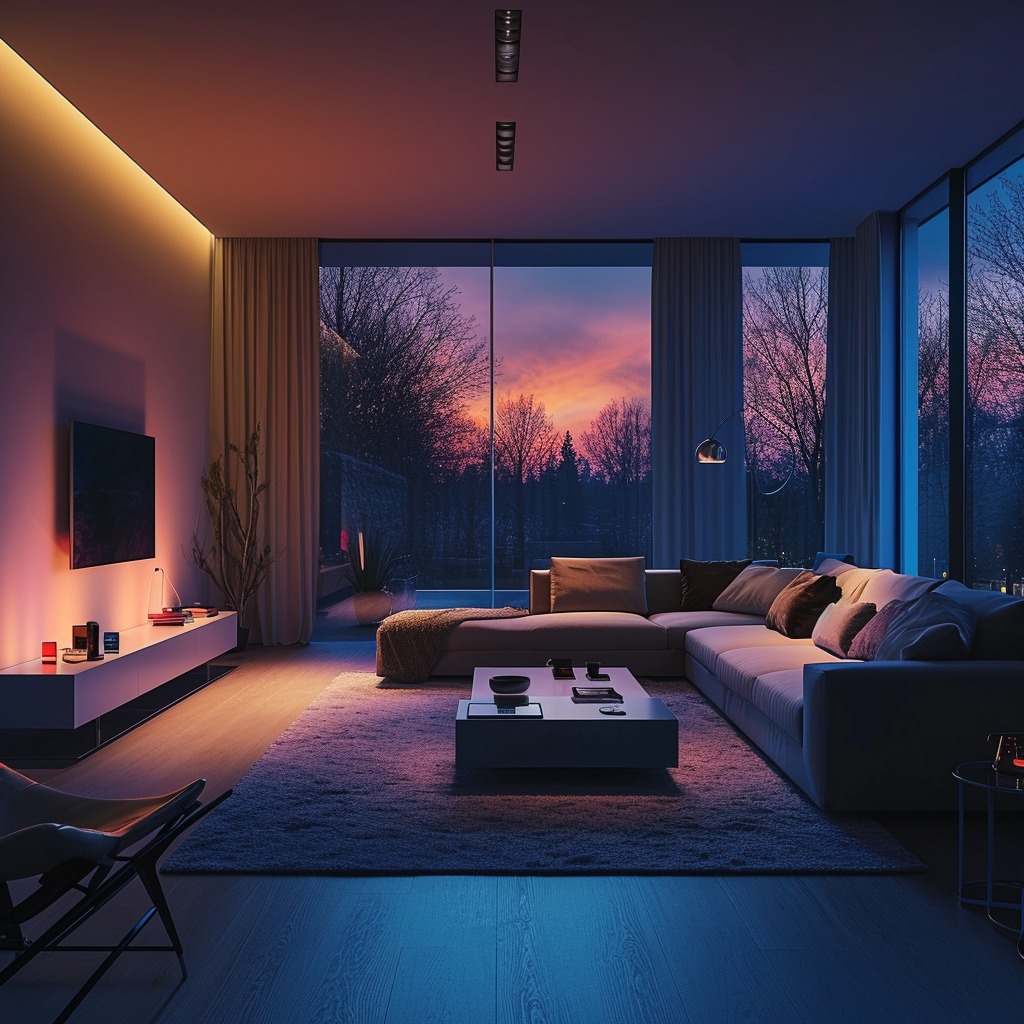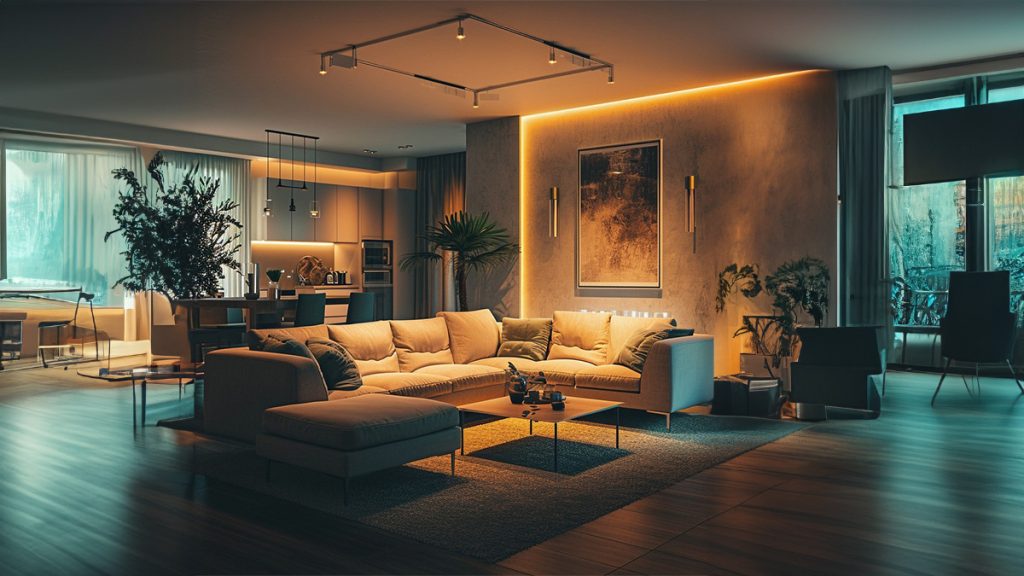The living room is more than just a space; it’s a place where life unfolds. From cozy family movie nights to elegant gatherings, the right lighting can set the mood and transform your living room into a versatile sanctuary. Understanding how to effectively use lamps, layer lighting, and create ambiance is key to achieving a space that’s not only functional but also inviting and warm. This article will guide you through the essentials of living room lighting, ensuring your space shines in the best possible light.

Understanding the Basics of Living Room Lighting
Before diving into the specifics, it’s crucial to understand the three main types of lighting that work together to illuminate your space: ambient, task, and accent. Ambient lighting provides overall illumination, task lighting focuses on specific areas for activities like reading, and accent lighting highlights architectural features or artwork.
Layering Light for Depth and Dimension
The secret to a well-lit living room is layering. Combining different types of light sources at various levels creates a rich and inviting atmosphere while ensuring functionality.
- Ambient Lighting: Start with a central source of ambient light, such as a ceiling fixture or recessed lighting, to set the baseline illumination for your room.
- Task Lighting: Incorporate task lamps, like floor lamps beside a reading chair or table lamps on side tables, to provide focused light where you need it most.
- Accent Lighting: Use accent lights like wall sconces, picture lights, or LED strips to draw attention to art, plants, or bookcases, adding depth and interest to the room.

Choosing the Right Lamps
Lamps are more than just light sources; they’re also key decor elements. The style, size, and color of your lamps can significantly impact your living room’s look and feel.
- Style: Whether modern, industrial, or traditional, choose a lamp that complements your living room’s aesthetic.
- Size: Consider the scale of your space and furniture. A large room might need a substantial floor lamp, while a smaller space might benefit from a delicate table lamp.
- Color and Material: From sleek metals to warm woods, the materials and colors you choose can add contrast, harmony, or a pop of visual interest.
Creating Ambiance with Dimmers and Color Temperature
Ambiance is all about creating a feeling or mood, and lighting is one of the most effective tools to achieve this.
- Dimmers: Installing dimmers allows you to adjust the brightness of your lights, instantly changing the room’s mood from bright and energetic to soft and serene.
- Color Temperature: Light bulbs come in various color temperatures, measured in Kelvins (K). Bulbs with lower Kelvin numbers emit a warmer, more yellow light, while higher Kelvin numbers produce a cooler, bluer light. For a cozy living room, warm white bulbs (around 2700K) are usually the most flattering.
Smart Lighting: Convenience and Control
Smart lighting systems offer unparalleled convenience and customization. With features like remote control, scheduling, and even voice commands, you can adjust your living room’s lighting to suit any occasion.
- Remote Adjustments: Change the brightness, color, and even the color temperature of your lights from your smartphone or remote.
- Scheduling: Set your lights to turn on or off at specific times, perfect for making your home look lived-in while you’re away or welcoming you back in the evening.
- Voice Control: Integrate your lighting with smart home assistants for hands-free control.
Conclusion: Light Up Your Living Space
Your living room’s lighting should reflect your style and meet your daily needs, creating a space that’s both beautiful and functional. By understanding the principles of layering, choosing the right lamps, and utilizing modern technology, you can illuminate your living room in ways that enhance both its appearance and ambiance. As you embark on your lighting journey, remember that the best-lit rooms are the ones that adapt to your life and bring joy with the simple flick of a switch.








